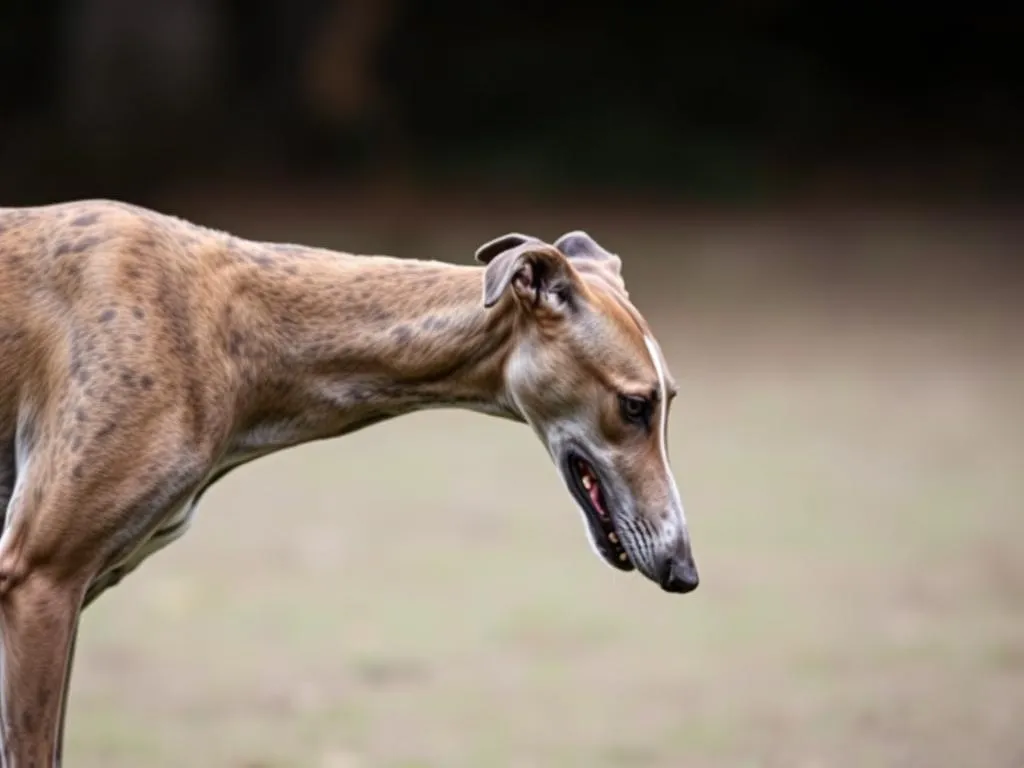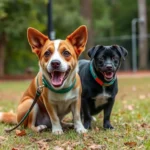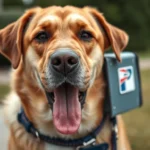
Introduction
Body language is an essential form of communication in dogs, enabling them to express emotions, desires, and reactions to their surroundings. Just like humans, dogs rely heavily on non-verbal cues to convey their feelings. Understanding these signals is crucial for dog owners, as it can significantly enhance their relationship with their pets and help ensure their well-being.
When it comes to greyhounds, there are unique characteristics that set them apart from other breeds. With their lean builds and gentle demeanor, greyhounds often face misconceptions about their behavior, such as being perceived as aloof or distant. However, these elegant creatures have a rich emotional life, and understanding their body language is key to unlocking their world.
As we delve into the intricacies of greyhound body language, readers will learn to interpret various signals, recognize the emotional states of their pets, and ultimately foster a deeper bond with their greyhounds.
The Basics of Canine Body Language
Understanding Canine Communication
Dogs communicate primarily through body language, which includes a combination of facial expressions, posture, and movements. By observing these signals, owners can gain insights into their dog’s emotional state and respond appropriately. It’s important to note that dogs often express emotions through a combination of cues rather than relying on a single signal.
Key Components of Dog Body Language
Facial Expressions
A dog’s facial expressions play a vital role in communication. For greyhounds, specific features such as their ears, eyes, and mouth can convey a range of emotions:
- Ears: Floppy ears often indicate relaxation, while perked ears can signal alertness or curiosity.
- Eyes: Soft, relaxed eyes suggest comfort, whereas wide-open eyes may indicate fear or anxiety.
- Mouth: A relaxed, slightly open mouth indicates calmness, while a closed mouth or lip licking can suggest stress.
Posture and Positioning
The way a greyhound stands or lies down can reveal a lot about how they feel. For instance, a dog standing tall with a straight back may feel confident, while a dog that is hunched over or has a lowered head may be feeling submissive or fearful.
Tail Position and Movement
A greyhound’s tail position is one of the most telling signs of their emotional state. Here’s a quick guide to tail signals:
- High and wagging: Happy and excited.
- Low and wagging: Content but possibly submissive.
- Tucked between the legs: Fearful or anxious.
- Stiff and raised: Alert or on guard.
Specifics of Greyhound Body Language
Unique Features of Greyhound Anatomy
Greyhounds have a distinctive physical structure. Their slim bodies, long legs, and narrow heads contribute to their unique body language. This build allows them to run at incredible speeds but also impacts their posture and movement. Understanding these anatomical features can help owners interpret their greyhound’s body language more accurately.
Common Greyhound Body Language Signals
Happy and Relaxed Signals
When greyhounds are happy, they exhibit several clear signals:
- Wagging Tail: A tail held high and wagging indicates excitement.
- Relaxed Ears: Ears positioned back but not flattened show a calm demeanor.
- Play Bow: A greyhound bending its front legs while keeping its rear up indicates an invitation to play.
Signs of Stress or Anxiety
Recognizing signs of stress in greyhounds is crucial for their well-being:
- Tucked Tail: May indicate fear or discomfort.
- Avoiding Eye Contact: A greyhound that turns its head away or avoids direct eye contact may be feeling anxious.
- Panting or Yawning: These can be signs of stress or discomfort.
Playful Behavior
Greyhounds are playful creatures, and understanding their play signals is essential. Look for:
- Excited Barking: Indicates eagerness to engage.
- Zoomies: A sudden burst of energy often means your greyhound is feeling playful and happy.
Greyhound-Specific Behaviors
Zoomies and Their Meaning
“Zoomies” refer to those bursts of frenetic energy where greyhounds dash around the house or yard. This behavior is completely normal and often indicates joy, excitement, or the need to expend pent-up energy. After a run, they may plop down for a nap, showcasing their couch potato side.
Couch Potato vs. Active Play
Greyhounds are known for their laid-back nature. While they enjoy bursts of activity, they also value rest, often spending long hours lounging. Recognizing the balance between their need for exercise and relaxation is crucial for their happiness and health.
Interpreting Greyhound Body Language in Different Situations
At Home
Understanding greyhound body language within the home environment can enhance daily routines. For example, during feeding time, a relaxed stance and wagging tail indicate eagerness, while a rigid posture may suggest uncertainty or fear. During grooming, observe how your greyhound reacts—if they lean into brushes, they enjoy it; if they pull away, it may be uncomfortable.
In Public Spaces
When in public, greyhounds may exhibit different body language signals due to the presence of other dogs and people. During interactions with other dogs, a relaxed body posture and wagging tail indicate a willingness to engage, while a stiff body or tucked tail may suggest discomfort or fear.
During Training Sessions
Training should be a positive experience for greyhounds. Pay attention to their body language during sessions—if they seem distracted or stressed, take a step back. Using positive reinforcement can help make training enjoyable, and recognizing when they are confused or anxious will help you adjust your approach.
Common Misinterpretations of Greyhound Body Language
Myths and Misunderstandings
Many misconceptions surround greyhounds, often leading to misinterpretations of their behavior. One common myth is that greyhounds are aloof, but this is far from the truth. In reality, they are often affectionate and enjoy human interaction. Another myth is that tail wagging always indicates happiness; however, context matters, and a wagging tail can also suggest agitation or excitement.
The Importance of Context
Understanding the context of a greyhound’s behavior is essential for accurate interpretation. For example, a greyhound that appears relaxed at home may show signs of stress in a crowded environment. Recognizing these differences allows for better communication and understanding.
Enhancing Communication with Your Greyhound
Building a Stronger Bond
Improving the relationship with your greyhound starts with understanding their body language. Spend quality time observing their signals and responding appropriately. Positive reinforcement is key; rewarding your greyhound for calm behavior can strengthen your bond.
Training Techniques
When training your greyhound, use techniques that respect their body language. For example, if your greyhound shows signs of stress, such as panting or pacing, take a break and allow them to relax. Use treats and praise to encourage desired behaviors, and be mindful of their emotional state to enhance the training experience.
Creating a Comfortable Environment
To foster a positive atmosphere, make your home a stress-free environment for your greyhound. Provide a comfortable space with their favorite toys and a cozy bed. A peaceful environment can significantly impact their body language, helping them feel safe and secure.
Conclusion
Understanding greyhound body language is vital for fostering a strong connection with your pet. By learning to interpret their signals, you can create a more enriching and supportive environment for them. Pay attention to their unique behaviors and adjust your interactions accordingly, ensuring they feel understood and loved. Observing your greyhound’s body language not only enhances your relationship but also contributes to their overall well-being.
As you embark on this journey of discovery, remember to enjoy the process and cherish the bond you share with your greyhound.









